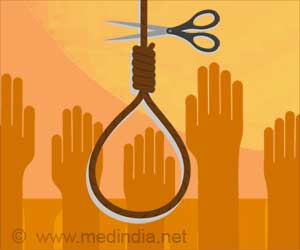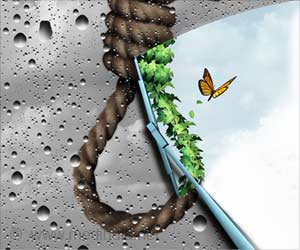Suicide risk is 39 percent higher in Arizona emergency medical technicians compared to general public, finds a new study.

‘New research shows that Arizona emergency medical technicians have a 39 percent higher risk of suicide compared to the general public.
’





"Although we were bracing ourselves to find an increase in suicides among our EMTs, I was shocked that it was that large," said Vigil, who is also a Tillman Scholar. "These findings help move the discussion of EMT suicide beyond the anecdotal and personal experiences and adds hard data showing there is a problem that needs to be addressed."After seeing the surprising results, Vigil said he wanted to act immediately to find effective solutions. Working with the Arizona Department of Health Services (AZDHS), they developed an EMS resiliency website that presents educational materials and resources to help build resiliency and reduce EMS suicide.
Then he teamed up with the Golder Ranch Fire District near Tucson's Mount Lemmon to measure the effectiveness of resiliency training. Vigil and Dr. Bobrow also are exploring the potential to incorporate resiliency and suicide-prevention training into the EMT certification process at the state level.
Suicide rates among the general population steadily have increased, with suicide now ranking in the nation's top 10 overall causes of death. Although the EMS profession has abnormally high suicide rates, as the results clearly showed, very little peer-reviewed research exists on the topic.
"On the worst days of our life, we know that firefighters and EMS professionals stand ready to respond at a moment's notice, even at the risk of their safety," Vigil said.
Advertisement
In 2014, a large North American survey conducted by the National Registry of Emergency Medical Technicians was published, suggesting EMTs have a 10-fold higher incidence of suicidal ideation and suicide attempts. Around the same time, the Arizona community had experienced several EMT suicide deaths.
Advertisement
Their data set covers a five-year period ending in December 2015. The vigil started the research last fall as part of his UA College of Medicine-Phoenix "scholarly project," with Dr. Bobrow, serving as his mentor. The study was presented at the 2018 National Association of Emergency Medical Services Physician's meeting and recently published online in Prehospital Emergency Care. (DOI: 10.1080/10903127.2018.1514090)
"We were surprised at how many actual EMT suicides we found every year in Arizona - on average nine per year," Dr. Bobrow said. "Each one is a tremendous tragedy and made our study very personal for us. We were very motivated to publish this paper and to work toward improving this horrible situation."
They hypothesize that the causes of the high suicide rates are multi-factorial and likely are related to work stress, shift work, a culture of not wanting to ask for help, repeated exposure to seeing suicide and other tragedies, among other factors.
"Physicians are not only clinicians but also scientists," Vigil said. "Our role as physicians is not only to practice medicine but also to conduct research that adds to the body of knowledge that evidence-based medicine is drawn from. The scholarly project requirement at the UA College of Medicine-Phoenix does an excellent job pairing students with community mentors and providing guidance through the entire research process. I know I'll carry the skills I'm learning with my scholarly project in my career as a physician."
Source-Eurekalert












